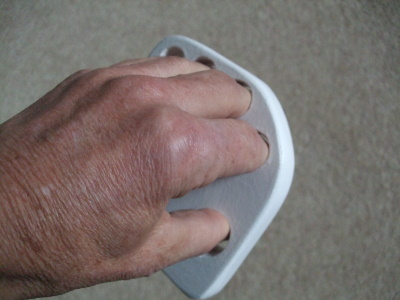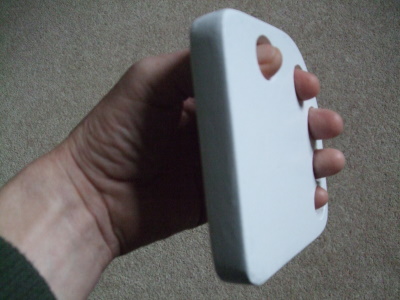A pocket device that allows efficient inputting of text.
Conventional computer input devices are not very good. The QWERTY keyboard is huge, can only be operated efficiently using both hands, needs considerable training and is a source of rsi. The mouse is better, but is also a source of rsi and not really that good for fine control. Inputs to handheld devices are ludicrously bad, tiny versions of the QWERTY keys, stylus based systems; who in their right mind would have deliberately designed the current system for inputting text into mobile phone? Then there are TV and video controllers…..
The current paradigm is that input devices belong to and are part of each individual machine; meaning that the user has to adapt to the machine and its particular input device. The Writer belongs to an alternative paradigm where the input device belongs to the user. It is a piece of hardware, carried by the user, and used on any machine.
It will be tailored to suit the individual, i.e. left- or right-handed, adjusted for hand size and strength, operated by other limbs for people without full use of hands, etc. Ideally there will be experts to test, advise and adjust for personal factors, making it more like a pair of shoes or glasses than a one-size-fits-all commodity.
The philosophy for the Writer is that user will invest money and training in a bespoke, largely mechanical device which needs only to continue to work efficiently and not go out of date. It could do other tasks provided they do not detract from its primary function and can be achieved with available resources.
Users will be prepared to pay for a satisfactory fit and feel, but having paid for it, will want it to last. A carefully chosen fountain pen rather than a biro. The user will also be investing time and effort into learning to use it and optimising its characteristics. They will be very upset if it was made obsolete by the machinations of the suppliers of the rest of the system. They will also want to use a keying system that suits them.
So, what might the Writer look like?
I imagine that it will usually fit comfortably in the hand with finger positions tailored to the users hand. Most of its volume is likely to accommodate the mechanical aspects and there will not be much space for the electronics. It will probably have Bluetooth wireless connection, and may be a single interface socket for connecting to the host, positioned so that the cable is not in the way of hand movements.


It should not be seen as competing with mobile gadgets, such as iPods, Satnavs, tablet PCs, eBooks, mobile phones, cameras and media systems. These are forever evolving; different size and shape, different combinations of function, more memory, faster processing etc. In contrast to the Writer these gadgets are produced in high volume to provide an amazing amount of functionality at low cost, They tend have a very short product life and poor text inputting. The Writer is complimentary to these gadgets by serving as the input device.
There are some functions that a Writer could provide. The device could be made to recognise the user by subtle personal differences in their movements. Particularly if the sensors are analogue, these differences would be similar to writing styles and signatures. This leads to important applications where secure access is required to car and home, bank accounts and restricted computer systems. Extra security might come from making it lock-up or even self-destruct if a stranger tries to operate it, thus making it not worth stealing.
Another possibility is harvesting energy from the keys maybe from a piezoelectric element
